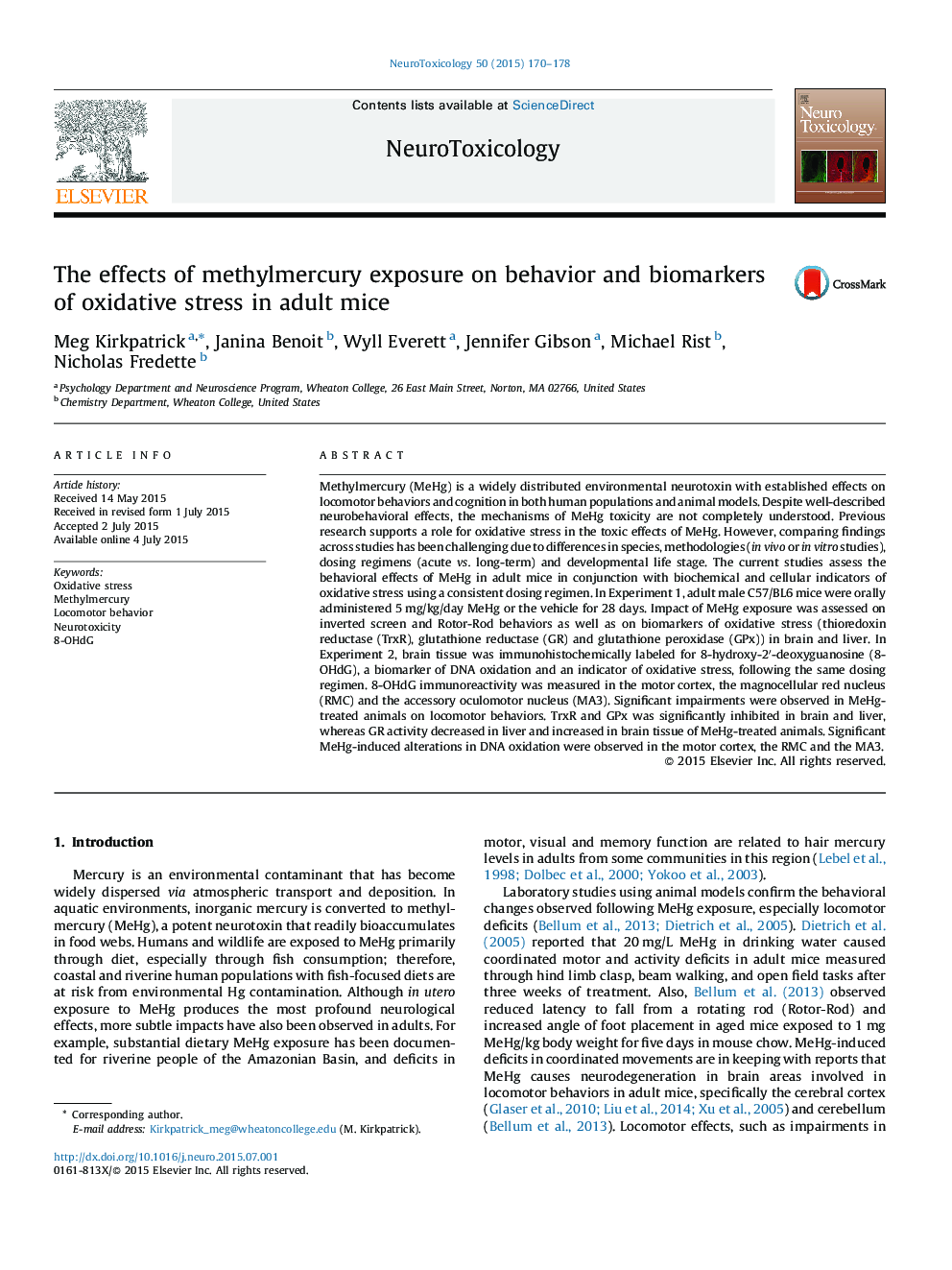| Article ID | Journal | Published Year | Pages | File Type |
|---|---|---|---|---|
| 2589505 | NeuroToxicology | 2015 | 9 Pages |
•Adult male C57/BL6 mice were given 5 mg/kg/day MeHg or vehicle for 28 days.•Locomotor (Rotor-Rod, inverted screen) impairments were seen after MeHg treatment.•MeHg treatment altered several markers of oxidative stress in both brain and liver.•Changes in 8-OHdG levels were observed in brain areas following MeHg treatment.
Methylmercury (MeHg) is a widely distributed environmental neurotoxin with established effects on locomotor behaviors and cognition in both human populations and animal models. Despite well-described neurobehavioral effects, the mechanisms of MeHg toxicity are not completely understood. Previous research supports a role for oxidative stress in the toxic effects of MeHg. However, comparing findings across studies has been challenging due to differences in species, methodologies (in vivo or in vitro studies), dosing regimens (acute vs. long-term) and developmental life stage. The current studies assess the behavioral effects of MeHg in adult mice in conjunction with biochemical and cellular indicators of oxidative stress using a consistent dosing regimen. In Experiment 1, adult male C57/BL6 mice were orally administered 5 mg/kg/day MeHg or the vehicle for 28 days. Impact of MeHg exposure was assessed on inverted screen and Rotor-Rod behaviors as well as on biomarkers of oxidative stress (thioredoxin reductase (TrxR), glutathione reductase (GR) and glutathione peroxidase (GPx)) in brain and liver. In Experiment 2, brain tissue was immunohistochemically labeled for 8-hydroxy-2′-deoxyguanosine (8-OHdG), a biomarker of DNA oxidation and an indicator of oxidative stress, following the same dosing regimen. 8-OHdG immunoreactivity was measured in the motor cortex, the magnocellular red nucleus (RMC) and the accessory oculomotor nucleus (MA3). Significant impairments were observed in MeHg-treated animals on locomotor behaviors. TrxR and GPx was significantly inhibited in brain and liver, whereas GR activity decreased in liver and increased in brain tissue of MeHg-treated animals. Significant MeHg-induced alterations in DNA oxidation were observed in the motor cortex, the RMC and the MA3.
